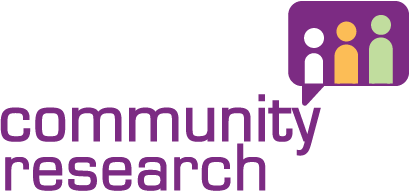Researching vulnerability
Significant numbers of people miss out on services, pay more (e.g. due to a ‘poverty premium’ or ‘disability price tag’), and have less of a voice – all because of who they are or their circumstances. Consumer organisations, the media and regulators are increasingly focused on people in vulnerable circumstances and the disadvantages they face. However, ‘vulnerability’ is a complex and ever-changing concept, and research with people in vulnerable circumstances is not straight-forward. At Community Research we offer considerable experience in research with people in vulnerable circumstances, and here we share our perspective on the role of research and insight in helping you understand vulnerability.
1. Who is ‘vulnerable’?
Research and engagement exercises often seek to hear from people who are ‘seldom heard’, ‘hard to reach’ or ‘in vulnerable circumstances’. Typically, these focus on audiences in the well-trodden paths of ethnicity, disability (usually undefined), income, and age. We have also seen research briefs where ‘seldom heard’ or ‘vulnerable’ groups are tacked on to a sample, but without much thought around why we’re including these people, how they can contribute or what they’ll gain from being involved. We advocate a clear process of analysis at the stage of developing a brief to ensure there is a clear purpose in involving people in vulnerable circumstances.
We ask:
Who is vulnerable in the context you’re talking about? Sometimes, it is more helpful to step outside the standard classifications of vulnerability or ‘hard to reach’ groups, as these can be too narrow or don’t reflect reality. For example, these definitions don’t always reflect the ‘inter-sectionality’ of characteristics and identity – that people can be BAME and gay, or young and disabled and living in a rural area. Definitions also don’t reflect the fact that vulnerability is a ‘trait not a state’, that people can move in and out of vulnerability, or can be made vulnerable by the actions (or inactions) of service providers and organisations.
How are they vulnerable? It helps to consider what extra or different needs some people may have, how they might be missing out, and what harm (or ‘detriment’) they might experience in this context.
This will involve some hypothesising, but we can help with this based on our own knowledge and experience, with desk research, and with scoping phone calls to people who have expertise working with specific communities. We often include interviews with intermediary organisations in our projects so we can get a broader understanding of context and issues for people with specific experiences or characteristics.
2. How do we identify and involve people in vulnerable circumstances?
As we’ve suggested in previous articles about research with ‘seldom heard’ communities, standard recruitment methods don’t usually work. Our recruitment methods depend on who we want to involve. Often we go through intermediary organisations, informal networks and social media groups. Flexibility is key to both recruitment and engagement when involving people in vulnerable circumstances. We also recommend handing control over to them and taking individual’s advice about what works best for them and how they wish to be involved (more on this in our article about engaging with people affected by trauma).
3. How can we share findings in ways that help decision-makers and frontline staff understand people in vulnerable circumstances?
We use a range of different techniques to help decision-makers and frontline staff find human connections with people with different lives. This builds empathy and understanding that can make a real difference the next time they are developing a service or policy, taking a call from a customer or making decisions. These techniques include:
Story-telling: the stories of people’s lives and experiences are powerful and memorable. In a recent project for Citizens Advice with survivors of domestic abuse, we shared anonymised audio clips in the debrief, where participants explained experiences in their own words. These first-person testimonies are hugely important in bringing issues to life. They provoke an emotional and empathetic approach in the listener – just the response Citizens Advice is hoping for in the decision-makers it is lobbying for change.
(Filmed) ethnography: Ethnography is a research technique where we immerse ourselves in the lives of individuals to understand how they live, use services, manage their finances interact with products and service users. Filmed ethnography enables us to create engaging outputs which tell the human story. Film and stories can be easily shared within organisations, spreading understanding and empathy for customers who were previously poorly understood. This is invaluable for training frontline staff and designing services. Our Community Close-ups approach uses this tool to give clients a deeper understanding of the communities they serve.
Collaborative workshops: we love bringing different people together, and collaborative workshops bring together clients, stakeholders and service users – all on an equal footing – to explore issues and come up with solutions that work for all. It takes careful preparation and flexibility to include people in vulnerable circumstances in collaborative workshops. However, their stories and input have a powerful impact, and help organisations to understand and connect with their experiences and shift organisational approaches. Appreciative Inquiry (AI) is a useful technique for finding common ground between participants who – on the surface – feel they have little in common.
Longer-term dialogue approaches – we also work with organisations to build a longer-term dialogue with people who use their services. We have set up and managed Customer/ Citizen Advisory Panels (CAPs) for both the Food Standards Agency and Portsmouth Water. This approach can be adapted to meet the needs of different types of people in vulnerable circumstances, building continuous, ongoing two-way dialogue so that their needs can continue to be met as services change and develop.

